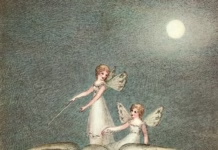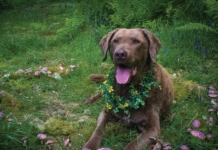Feature Image:
Lady of the Vanir by Annie Stegg
gallerygerard.com
An old man in tattered clothes shows up at your door. I want a prophecy, he says, blinking his single eye.
I need to know what will become of this world. You take pity. You agree to work seidr, fortune-telling magic, in exchange for the old man’s ring and necklace. You summon your maidens and sit down in your seat of power, holding a long iron staff. You are of average height at five feet, two inches, but you were raised by giants; the heavy wand is nearly half your length.
You set its end against the ground, where it connects you to time and the cosmos. Perhaps you also throw some henbane seeds into the fire for inspiration; the smoke has helpful hallucinogenic properties.
When the girls begin to sing, their voices carry you out of yourself and far from your village. You travel on a different plane of existence, narrating your vision aloud: The oldest deities create the world out of a void by lifting the land out of the sea. The primary gods, the Æsir, bring order to chaos, and then fight with the Vanir, gods of wisdom, fertility, and fortune telling. The World Tree, Yggdrasil, grows through all nine worlds, from underworld to earth to the gods’ Asgard. Your trance takes you to Ragnarók, the terrible last battle between gods and giants that will destroy the cosmos and leave another watery void. And then (in a late addition to the story) comes hope, when a son of the great god Odin returns from the dead to see fields greening over.
At that, your client throws back his cloak. But you already know who he is; you just told him his own story. He is Odin himself, the one-eyed chieftain of all gods, the deity of wisdom, war, Valhalla, and the winter Yule festival.
He thanks you.
As a völva, a Viking sorceress and seer, you are one of the most powerful women of your time. You are experienced. Respected. And quite probably rich. You are needed all over the north, so you travel, either alone or with helpers, depending on whether you prefer to bring your own singers or rely on local talent. Set your sights high: In the Norse sagas, völvar are invited to splendid feasts and receive gifts of jewelry, oxen, and more.
One of several Viking graves in Fyrkat, Denmark, shows how revered the völvar were. One woman was found buried in a blue and red gown embroidered with gold threads, luxuries usually reserved for royalty. Her necklace was inspired by the one worn by the goddess Freyja. The grave includes a collection of objects useful for the afterlife, including her long iron wand (also classified as a rod or even a distaff for spinning), a packet of that magical henbane, and an amulet in the shape of a stool-like chair such as the one in which she sat for seidr. No queen could have wished for a better burial.
Some poems in the Edda, the medieval anthologies of Viking sagas, stories, and poetry, warn that seeresses are deceptive. Worst of all: “Beware a völva who prophesies good.” That sort is just a people pleaser or has her eye on a nice fat reward. The true fortune teller sees a bleak future, and happiness is merely an accident. But who wants to foretell only doom? Are you wrong to offer hope, rebirth, visions of greening fields? Perhaps it is not entirely a bad thing that some of the sorceresses have names that wink at duplicity, such as Grima (“mask”) and Huld (“conceal”).
The völva who foretells only good things might be lumped together with some rather horrible types of sorceress: fordæda, hála, skass, and more—meaning variously hideous, stupid, evil, strumpet, and worse. These would be the ones who cast spells for a “witch ride,” a magical attack on a sleeping enemy. The victim can suffer anything from a bad dream to death.
Whether your magic is entirely to the good or occasionally malicious, sorcery is a female province. Male sorcerers, the seidr-men, are fewer in number and less well respected. In the sagas, a man who takes on a feminine role as a völva is the object of suspicion.
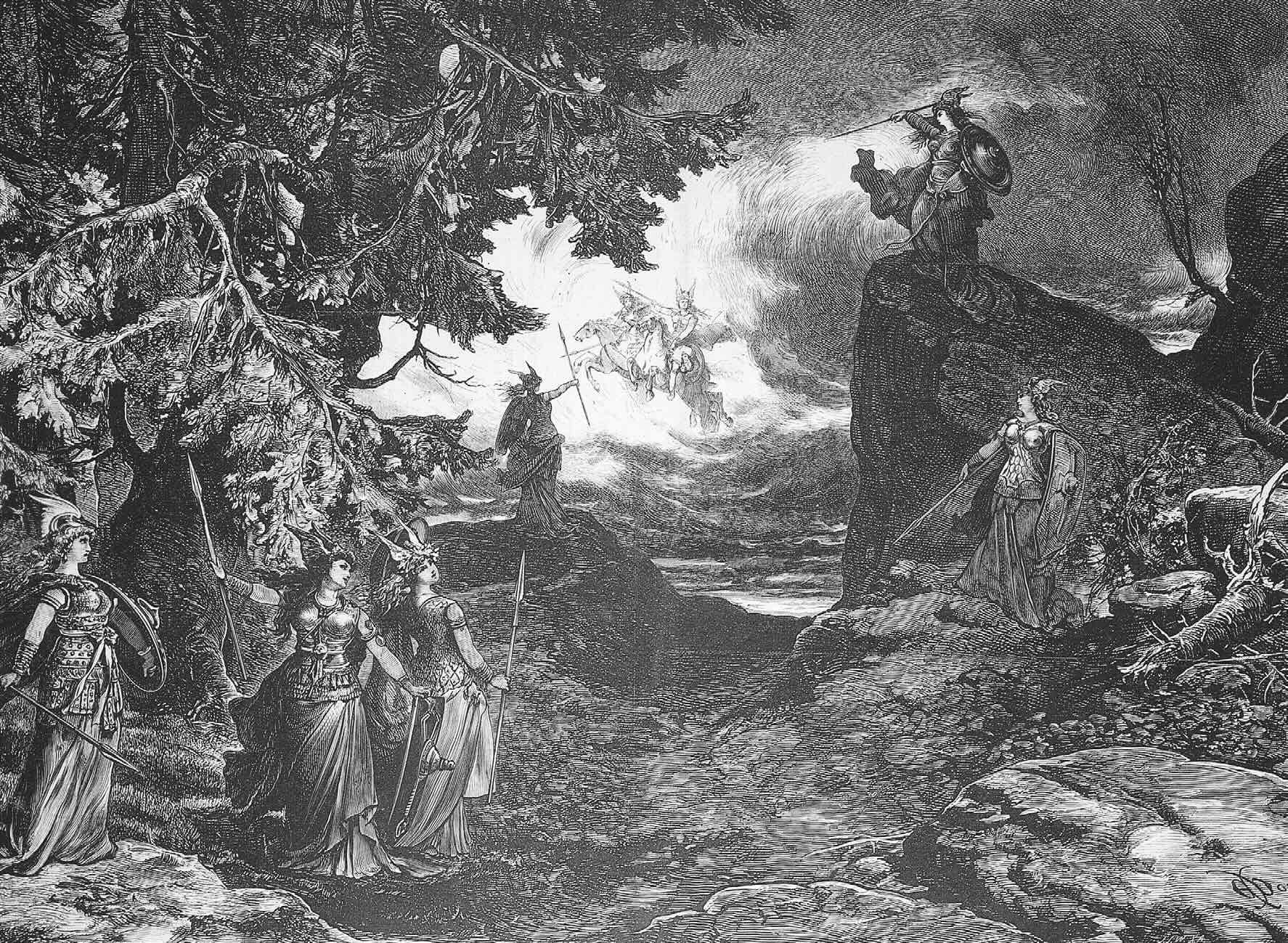
And that’s just fine with you.
You have given Odin the most important prophecy of the Viking era, to be recorded in a poem known as the Voluspá, a section of the 13th century Elder Edda. You will always be associated with the one-eyed god, but the fertility goddess, Freyja, has just as much influence. She is the seidr’s first practitioner, and she is everywhere in the ceremony and in the lives of Viking women. A Sami völva in the sagas makes it exclusive: She prophesies only by Freyja’s will. In the Prose Edda, Freyja is “the most renowned of the goddesses,” and deservedly so. She is a shape-shifter, a beauty, and a mother of daughters; she is also a patroness for warriors, and she’s a wife, albeit to the rather negligible god Odr. (She loves him; the heart wants what it wants.) Romantic love pleases her, and she is the goddess on whom to call for matters of the heart.
As for the occasional scandal, Freyja has those just like any other powerful female. In a move classic to women’s detractors, the trickster god, Loki, accuses her of improprieties with her brother. (Anne Boleyn, anyone?)
Never you mind, I imagine her saying as she climbs into a chariot pulled by two cats; I’m off to Sessrúmnir.
That is Freyja’s great hall of the dead, which stands on a plain called Fólkvangr (“field of the people” or “field of the army”). Sessrúmnir (“room of seats”) welcomes women who have suffered “a noble death,” including völvar and those who fulfill more traditional roles as housewives, weavers, and mothers. Freyja also hosts half the warriors who fall in battle, and she is the one who does the choosing; Odin’s Valhalla takes Freyja’s rejects. She’s a model for the Valkyries, who escort warriors to Odin’s Valhalla.
I like to think Sessrúmnir was created for women, with the men as guests or accessories, like Freyja’s signature falcon-feather cloak and her famous necklace, Brisingamen. I picture the hall hung with tapestries in foliate green and deep red, Freyja presiding in a golden gown—perhaps spun from the red-gold tears she weeps when her husband is away. Here you can discuss the mysteries of the seidr and the fortunes you foretold, as well as the loves in your life, the harvests, the daughters. The table is laden with the very best mead and honey cake, brewed and baked by you and your sister völvar.
Someone proposes that you all work seidr magic together. You thump your iron rods upon the stones of the afterworld and sing. Once again, you travel to the beginning of the world, sights set on Ragnarók.
In the midst of a vision, a heavy knock sounds on the door. It is the sound of someone who has been rapping for a while and has grown impatient: Odin, Loki, the spirit of a stray seidr-man? Freyja gets to her feet with firelight gleaming over her dress. She raises a drinking horn and spills fragrant mead over the table in a benediction. What will become of this mad, violent, beautiful world? she asks her völvar. What do we think? Open the door!



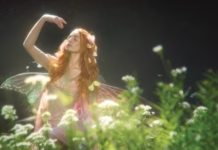



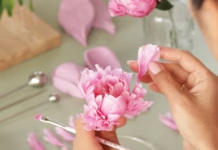







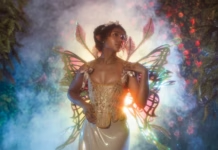








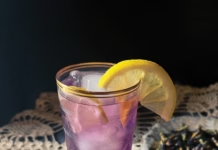



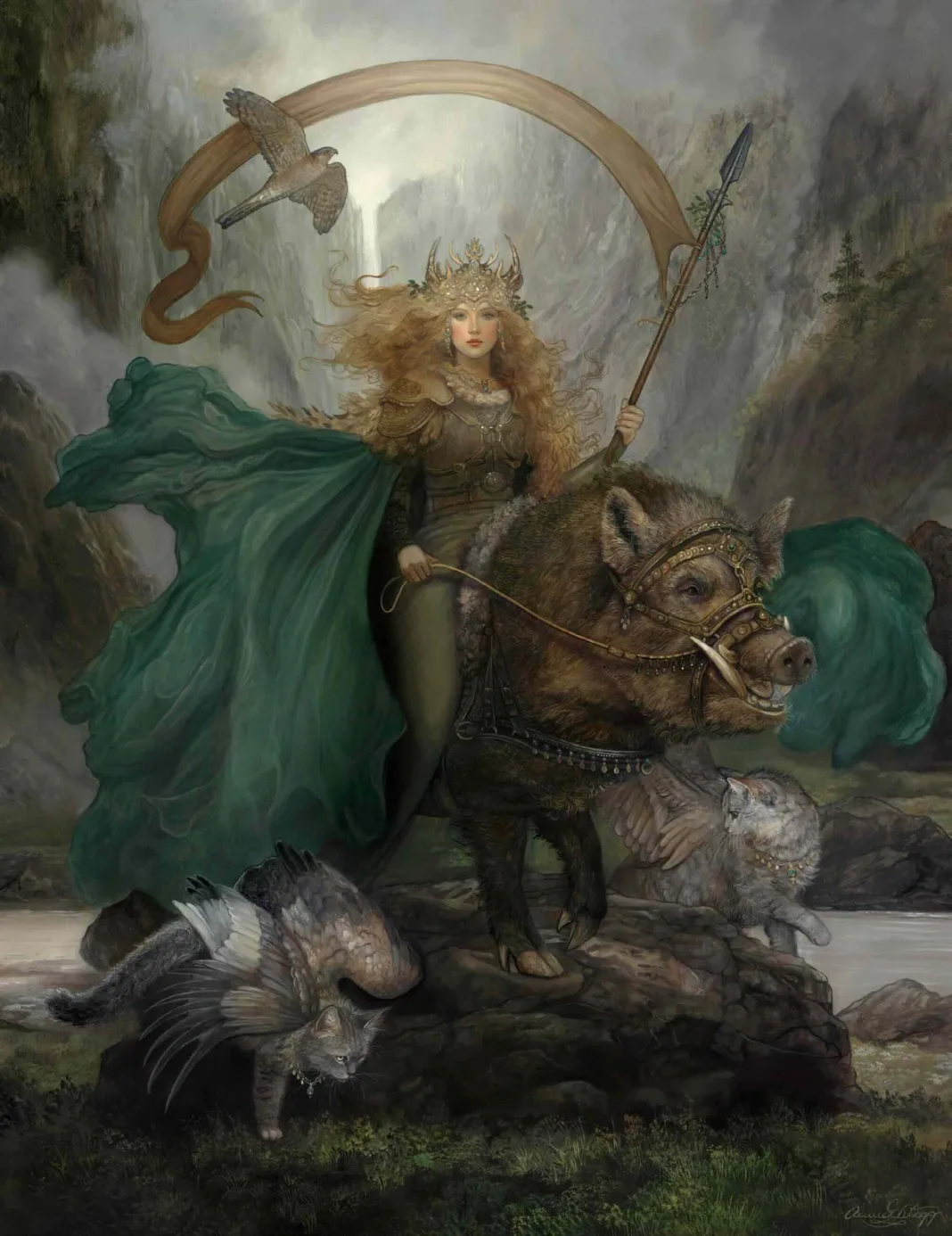
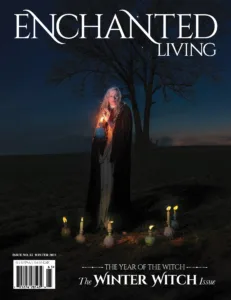 Enchanted Living is a quarterly print magazine that celebrates all things enchanted.
Enchanted Living is a quarterly print magazine that celebrates all things enchanted. 